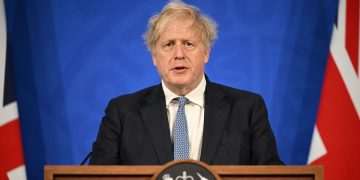Pensioners could see an increase of over £570 next year under the Triple Lock.
Millions of older people are on track for a bigger State Pension pay rise next April than previously forecast after a key figure used in the Triple Lock policy was revised by the Office for National Statistics (ONS). Data released on Tuesday showed an upwards revision to total wage growth including bonuses for May to July, going up from 4.7 per cent to 4.8 per cent.
Under the Triple Lock the New and Basic State Pensions increase each year in-line with whichever is the highest between the average annual earnings growth from May to July (4.8%), Consumer Price Index (CPI) inflation rate in the year to September, or 2.5 per cent. Additional State Pension elements and deferred State Pensions rise each year with the September CPI figure.
An increase of 4.8 per cent would see those on the full New State Pension receive £241.30 per week, while those on the maximum Basic State Pension would receive £184.90 per week.
READ MORE: New update on calls for weekly State Pension payments of £586 for people over 60READ MORE: State Pension uprating will not be paid to thousands of older people in April
The September CPI is due to be published on October 22, but is unlikely to be higher than the earnings growth measure. The most recent figures show that the rate of CPI inflation was 3.8 per cent in August.
Commenting on the revised earnings growth, Helen Morrissey, head of retirement analysis at Hargreaves Lansdown, said: “This has consequences for people getting state pension who can expect the amount they get to go up ever so slightly from next April.
“Those on the full New State Pension could be on course for £241.30 per week rather than £241.05 while those on the full Basic State Pension will see their weekly payment rise to £184.90 rather than £184.75.
“Of course we are still waiting for the final piece of the Triple Lock puzzle to click into place, with inflation figures published next week also used. However, with inflation currently hovering at 3.8 per cent the likelihood is that average wages will be the figure used and this should be confirmed in the forthcoming Budget.”
It’s important to remember that the amount someone receives depends on their National Insurance contributions. To receive the full New State Pension you need around 35 years’ worth, but this may differ if you were ‘contracted out’.
If September’s inflation figure matches the Bank of England’s projection of 4 per cent, the State Pension would increase by around £574 from April 2026 – lifting it to £12,547 per year.
The projected uprating leaves just £36 before the Personal Allowance income threshold of £12,570 is exceeded which would see more pensioners pay tax in retirement.
The Labour Government confirmed earlier this year that the Personal Allowance will remain frozen at £12,570 until April 2028.
Chancellor Rachel Reeves will confirm the annual uprating at the Autumn Budget on November 26. An uprating of 4.8 per cent on the current State Pension would see people receive the following amounts.
Full New State Pension
- Weekly: £241.30 (from £230.25)
- Four-weekly pay period: £965.20
- Annual amount: £12,547
Full Basic State Pension
- Weekly: £184.90 (from £176.45)
- Four-weekly pay period: £739.60
- Annual amount: £9,614
State Pension and tax
Guidance on GOV.UK states: “You pay tax if your total annual income adds up to more than your Personal Allowance. Find out about your Personal Allowance and Income Tax rates.
Your total income could include:
- the State Pension you get – Basic or New State Pension
- Additional State Pension
- a private pension (workplace or personal) – you can take some of this tax-free
- earnings from employment or self-employment
- any taxable benefits you get
- any other income, such as money from investments, property or savings
Check if you have to pay tax on your pension
Before you can check, you will need to know:
- if you have a State Pension or a private pension
- how much State Pension and private pension income you will get this tax year (April 6 to April 5)
- the amount of any other taxable income you’ll get this tax year (for example, from employment or state benefits)
You cannot use this tool if you get:
- any foreign income
- Marriage Allowance
- Blind Person’s Allowance
Use this online tool at GOV.UK to check if you have to pay tax on your pension. The full guide to tax when you get a pension can be found on GOV.UK here.

















































